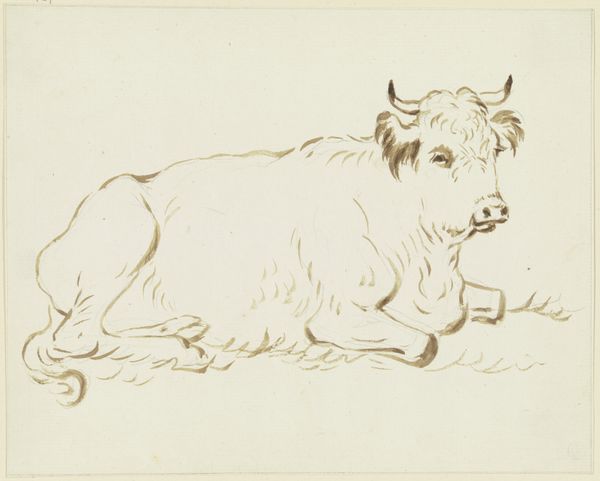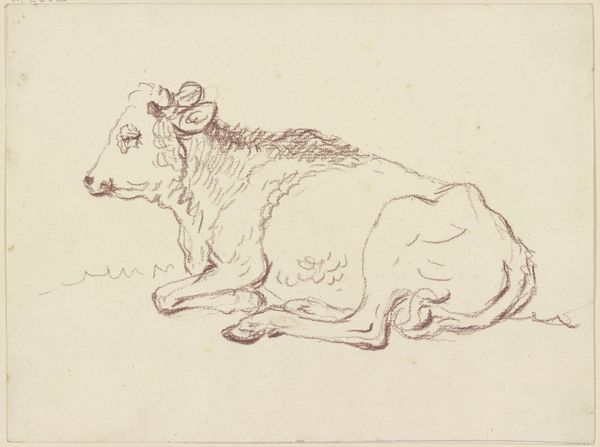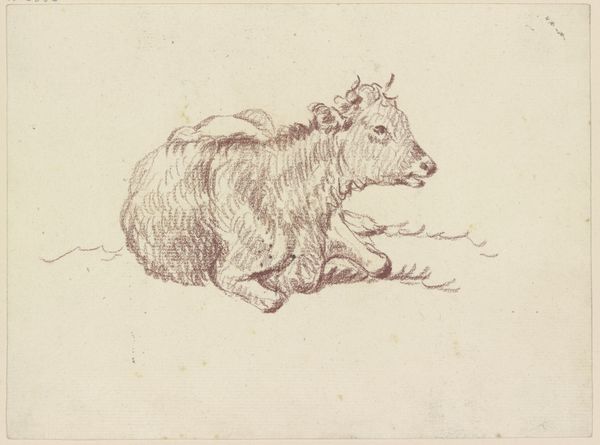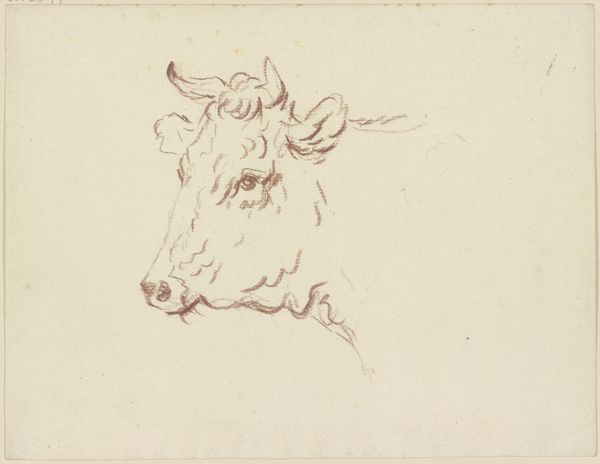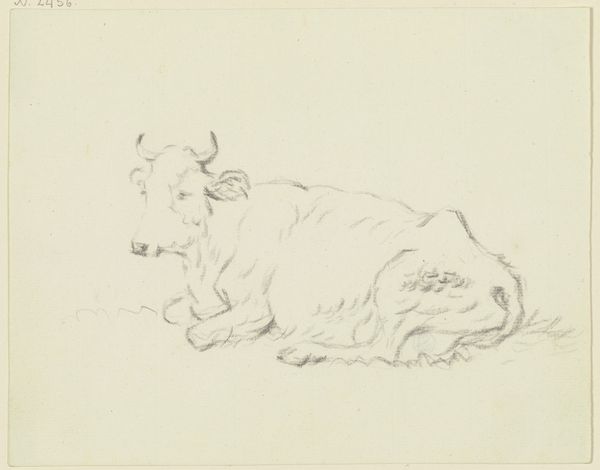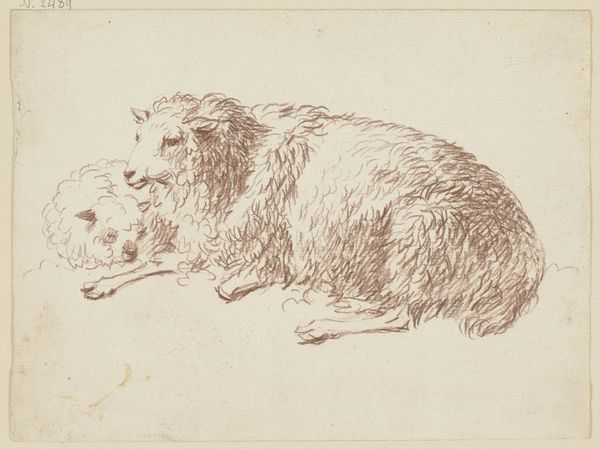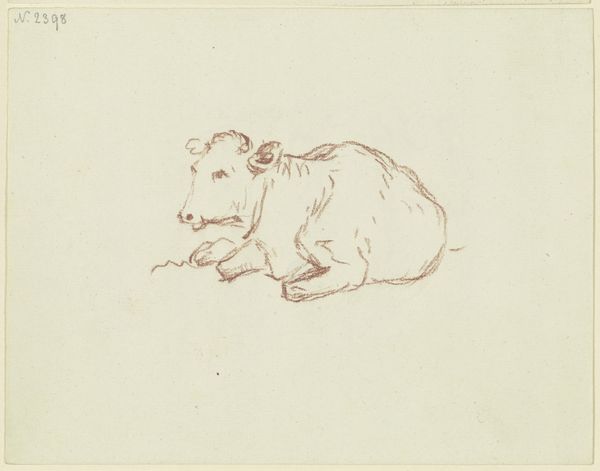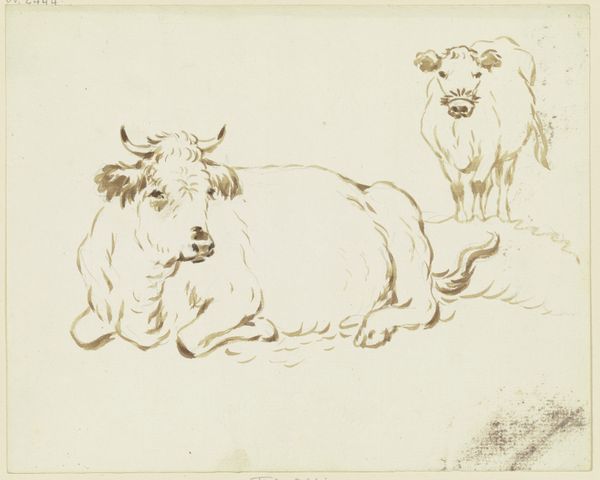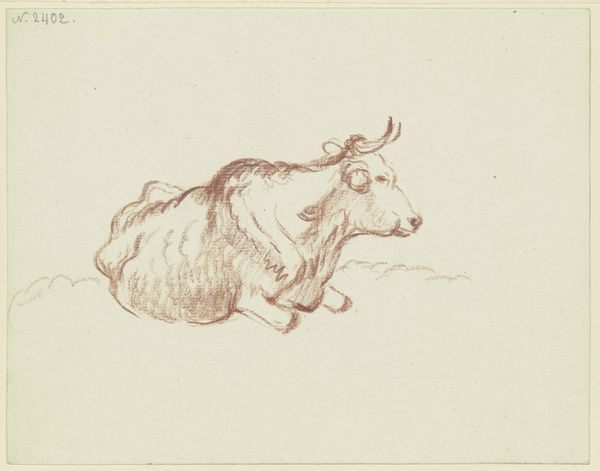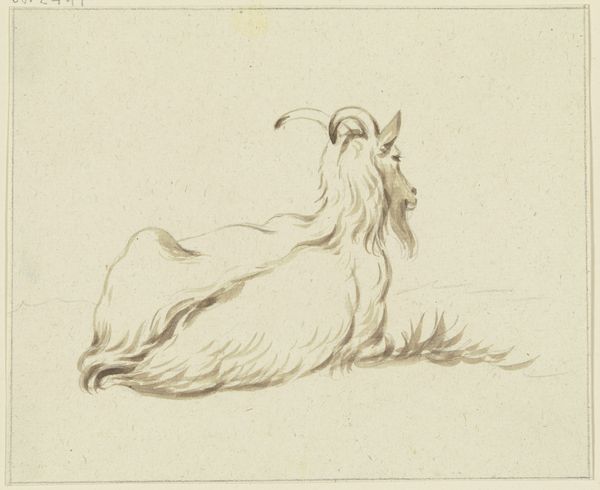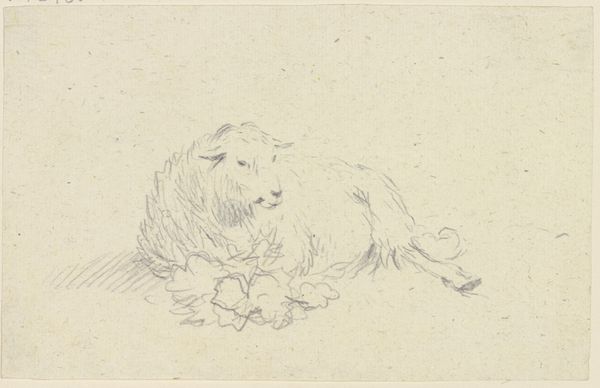
drawing, ink
#
drawing
#
landscape
#
figuration
#
personal sketchbook
#
ink
Copyright: Public Domain
Curator: This charming sketch, held here at the Städel Museum, is entitled "Liegendes Rind nach links, halb von vorn gesehen," or "Lying Cow to the Left, Seen Half from the Front," by Friedrich Wilhelm Hirt. Executed in ink, it showcases the artist’s delicate linework. What strikes you about it initially? Editor: A profound sense of placidity. The subject is utterly at ease, grounded. I can't help but consider its implications for the animal-industrial complex. It brings into stark contrast our current disconnected relationship with food production. Curator: Absolutely. And seeing that the sketch appears to have been part of a personal sketchbook, it becomes an intimate portrayal of rural life, filtered through the artist’s own perception and perhaps even idealization. We need to remember the shifting landscapes of the time that created entirely new relations between humans and the natural world. Editor: Yes, the pastoral ideal itself requires a critical lens. Who gets to perform leisure? This calm resonates differently when viewed alongside the histories of land enclosures and their ramifications on peasant communities and animals. Curator: A valuable consideration! We also must recall the status of this type of rural painting in academic training. Cows become acceptable, even quaint subjects. Hirt's focus is not the landscape, or the people. It's the livestock. How does that reflect cultural priorities and perhaps the economics of the moment? Editor: Precisely! By positioning this simple cow study within its socio-political context, the image sparks vital discourse on our shared present and ongoing implications of this animal’s portrayal, especially considering its lack of any historical specificity. Is this EVERY cow? Is this ANY cow? Or one in particular, favored? Curator: I believe so. The seeming simplicity provides ample grounds for thinking about societal norms. Thank you for pointing that out. Editor: It's been a pleasure contextualizing the work with you. It reminds us of the necessity to keep questioning our interactions with what appears ‘natural'.
Comments
No comments
Be the first to comment and join the conversation on the ultimate creative platform.
